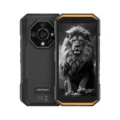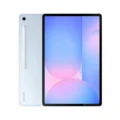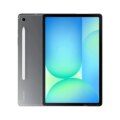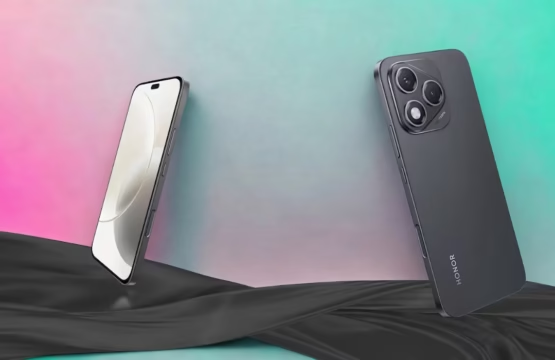Honor Pad X9a
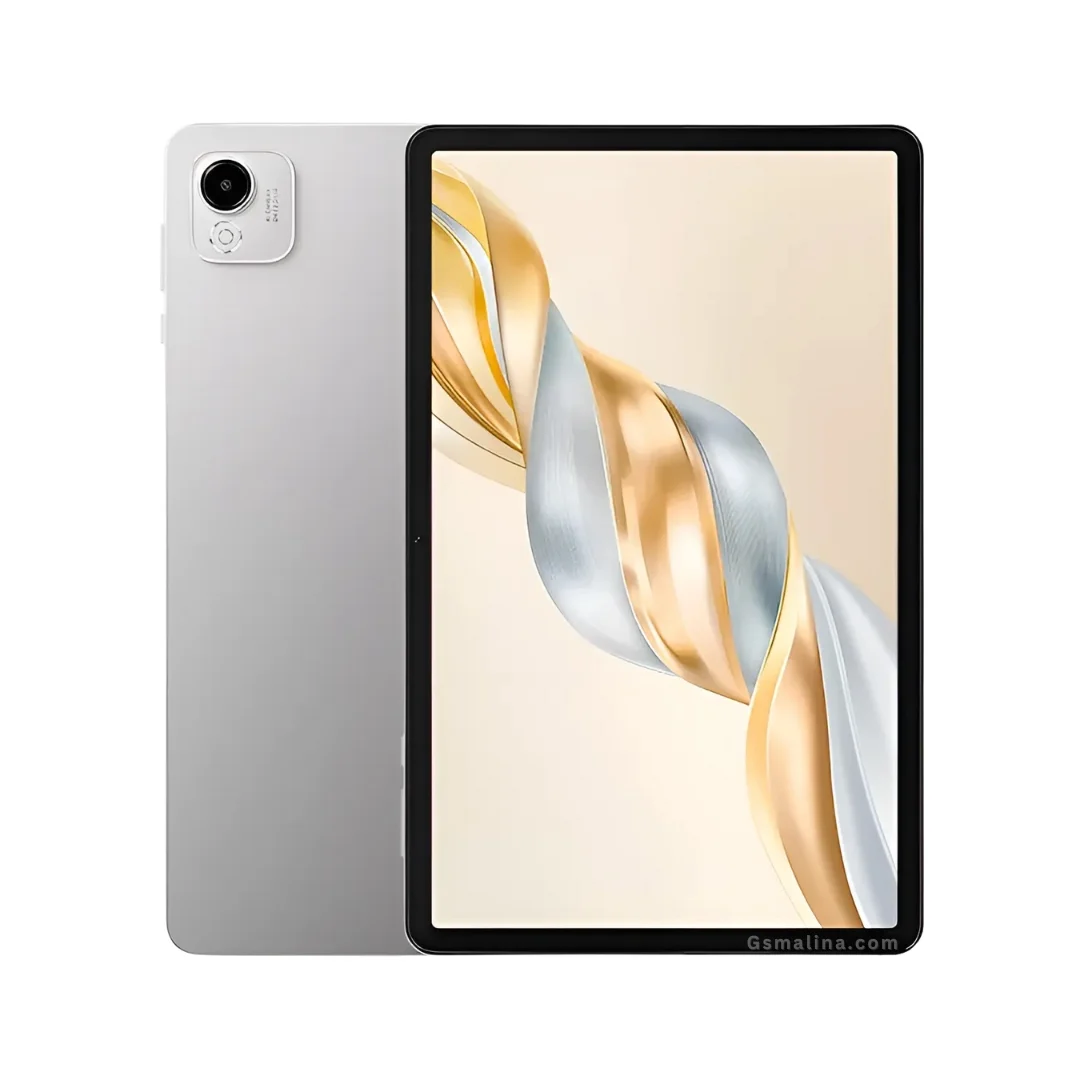










‹
›
×
Pros
- Aluminum frame and back.
- 11.5-inch, 120Hz refresh display.
- 8GB RAM and 128GB storage.
- Stereo quad speakers.
- 8300mAh battery, 35W charging.
×
Cons
- No cellular connectivity.
- No FIngerprint sensor.
Specification
Prices
| Expected price The expected price reflects the anticipated cost of a product, converted from major currencies such as the Dollar, Euro, and Rupee. | ৳30,000 |
| Official Price | $220 |
| Global Price | $220 |
| EUR | €210 |
| INR | ₹19,000 |
Launch
| Announced | 2025, March 21 |
| Status | Coming soon. Exp. release 2025, April |
Network
| Technology | No cellular connectivity |
| 2G bands It is the 2nd generation of mobile data communication technology. | N/A |
| 3G bands It is the 3rd generation of mobile data communication technology. | N/A |
| 4G bands It is the 4th generation of mobile data communication technology. | N/A |
| SIM SIM (Subscriber Identity Module) is a small card that contains a mobile network subscriber's account information. This allows the phone to use the card to attach to a mobile network. The SIM card is most commonly associated with GSM and UMTS mobile networks. Moving a SIM card from one phone to another allows a subscriber to switch mobile phones without having to contact their mobile network carrier. SIM cards can also be used by a phone to store limited amounts of data, such as phone numbers and text messages. | No |
Display
| Size The industry-standard way of representing display sizes is publishing their length in inches. The screen-to-body ratio is a measure that relates to the size of the screen bezels. The bigger the ratio, the smaller the bezels are, meaning the display takes up a larger area on the device's front. | 11.5 inches, 376.3 cm2 (~84.1% screen-to-body ratio) |
| Type | TFT LCD, 120Hz, 400 nits (peak) |
| Refresh Rate | 120Hz |
| Resolution Display Resolution is the measuring way of how much pixels does a display contains. A higher resolution means more pixels and more pixels provide the ability to display more visual information (resulting in greater clarity and more detail). | 1504 x 2508 pixels, 5:3 ratio (~254 ppi density) |
| Water Resistant |
Body
| Dimensions It's the size of the phone in format (H x L x W) and the volume of the phone where available. | 267.3 x 167.4 x 6.8 mm (10.52 x 6.59 x 0.27 in) |
| Weight | 475 g (1.05 lb) |
| Build Describes the construction materials, methods and finishes used by the manufacturer when building a phone. | Glass front, aluminum frame, aluminum back |
| Color | Gray |
| Others | Stylus support |
Performance
| Chipset It is a group of integrated circuits designed to perform one or more dedicated functions, often with real-time computing constraints, Popular smartphones are equipped with more advanced embedded chipsets that can do many different tasks depending on their programming. | Qualcomm SM6225 Snapdragon 685 |
| Nanometer | 6 nm |
| OS Every Mobile Phone system runs on a base software called Operating System (OS). Operating System controls all basic operations of the Mobile (such as smartphones, PDAs, tablet computers, and other handheld devices). The Operating System allows the user to install and run third party applications (apps), apps are used to add new functionality to the device. | Android 15, MagicOS 9 |
| CPU CPU (Central Processing Unit) mostly known as processors, CPU processes instructions in order to carry out certain functions that make your device operate properly. Processors are often described as the brain of computers, smartphones and tablets, Smartphones and tablets rely on processors to carry out their every task, Processors are an incredibly important factor in selecting any type of computing device, including your smartphone. | Octa-core (4x2.8 GHz Cortex-A73 & 4x1.9 GHz Cortex-A53) |
| GPU GPU (Graphics Processing Unit) is a single-chip processor designed to rapidly manipulate and alter memory to accelerate the creation of images in a frame buffer intended for output to a display, This includes things such as lighting effects, object transformations, and 3D motion. | Adreno 610 |
Main camera
| Single | 8 MP, f/2.0, (wide), 1/5.0" |
| Video | 1080p@30fps |
Selfie Camera
| Single | 5 MP, f/2.2 |
| Video | 1080p@30fps |
Sound
| Loudspeaker Loudspeaker is a small sound driver fitted within a mobile phone, which is used to produce sound. | Yes, with stereo speakers (4 speakers) |
| 3.5mm jack A common connector for plugging in audio output or input | No |
Connectivity
| WLAN Wireless Local Area Network (WLAN) is a method of distributing data wirelessly to a local area network practically to the internet. It is a popular wireless networking technology using radio waves to provide high-speed network connections that allow devices to communicate without cords or cables, Wi-Fi is increasingly becoming the preferred mode of internet connectivity all over the world. | Wi-Fi 802.11 a/b/g/n/ac, dual-band |
| USB USB is a standard for a wired connection between two electronic devices, including a mobile phone and a desktop computer. | USB Type-C |
| Bluetooth Bluetooth is a wireless technology standard for exchanging data over short distances from fixed and mobile devices. It is a wireless communications technology for exchanging data between mobile phones, headsets, computers, and other network devices over short distances without wires, Bluetooth technology was primarily designed to support simple wireless networking of personal consumer devices. | 5.1, A2DP, LE |
| Infrared port IrDA (Infrared Data Association) is an old data sharing technology in the means of Infrared Port. It uses a beam of infrared light to transmit information and so requires a direct line of sight and operates only at close range. |
Storage
| RAM RAM (Random Access Memory) is a type of mobile, computer memory that can be accessed randomly, any byte of memory can be accessed without touching the preceding bytes that allow information to be stored and accessed quickly from random locations. RAM is the most common type of memory found in computer systems, smartphones, tablets, and other electronic devices. | 8 GB |
| ROM Internal memory is the memory available onboard (chip or motherboard) which is given while manufacturing at the factory. is a data storage space (flash memory) mostly used in smartphones, tablets, and other electronic devices where operating system, apps, music, photos, videos, files, and other user data Is stored. | 128 GB |
| Variant | 8GB 128GB |
| Card slot A special slot for inserting a memory card for expanding your storage. It is a special slot for inserting a memory card. Memory cards allow you to expand the phone's built-in memory, A memory card (sometimes called a flash memory card or a storage card) is a small storage medium used to store data such as text, pictures, audio, and video, for use on small, portable or remote computing devices such as mobile phones, mp3 players, digital cameras. | No |
| SD Slot |
Software
| Google Services (official) | Yes |
| Operating System | Yes |
Security
| Fingerprint A sensor is a device, module, or subsystem whose purpose is to detect events or changes in its environment and send the information to other electronics. The specific input could be light, heat, motion, moisture, pressure, and location, The output is generally a signal that is converted to use in computing systems, a location sensor, such as a GPS receiver is able to detect the current location of your electronic device | |
| Type | Accelerometer |
Others
| Notifications LED | Yes |
| Gaming buttons | No |
| Cooling system | No |
USB
| Charging | Yes |
| USB Type C | Yes |
| Mass Storage | Yes |
| USB On-The-Go (OTG) | Yes |
Battery
| Capacity The unit of capacity is milliamp-hours (mAh), which means 3000mAh can be put on the battery to discharge it in one hour. The battery capacity represents the maximum amount of energy that can be extracted from the battery under certain conditions. | 8300 mAh |
| Type | Non-removable Li-Po |
| Fast charge | 35W wired |
Other
| NFC NFC (Near Field Communication) is a shorter range of high-frequency data transferring technology. It is a set of standards for smartphones and similar devices to establish peer-to-peer radio communications with each other by touching them together or bringing them into proximity, usually no more than a few inches. | |
| Radio FM | |
| Audio Jack | |
| Computer sync | |
| OTA sync | |
| Infrared | |
| DLNA | |
| VoLTE | |
| Tethering |
More
| Made by | China |
Reviews/comments
Disclaimer Note
We can not guarantee that the information on this page is 100% correct.





